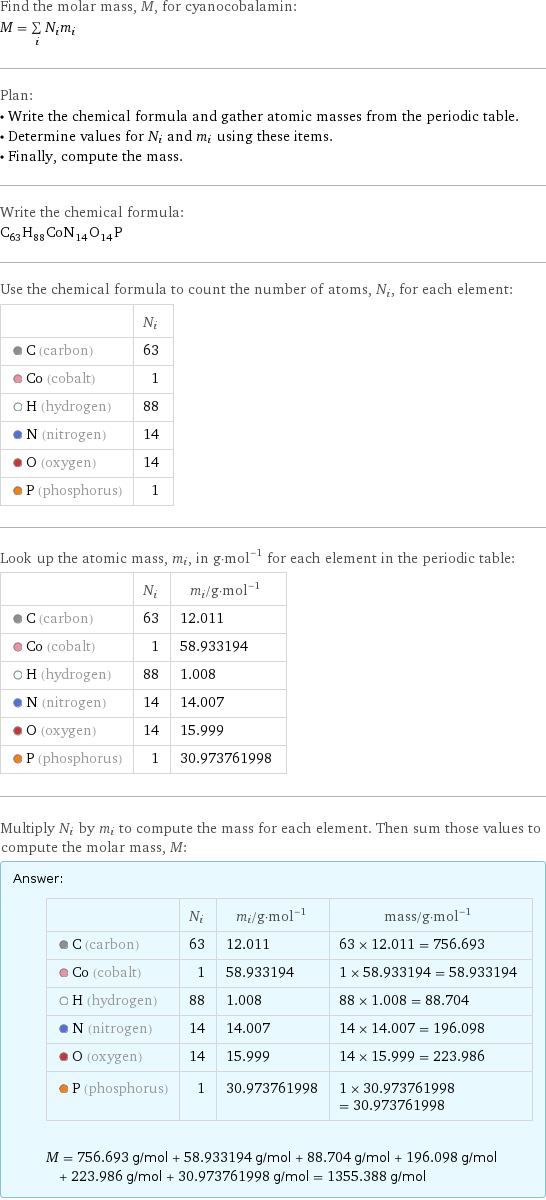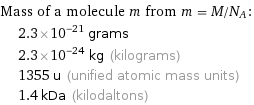Input interpretation

cyanocobalamin | molar mass
Result

Find the molar mass, M, for cyanocobalamin: M = sum _iN_im_i Plan: • Write the chemical formula and gather atomic masses from the periodic table. • Determine values for N_i and m_i using these items. • Finally, compute the mass. Write the chemical formula: C_63H_88CoN_14O_14P Use the chemical formula to count the number of atoms, N_i, for each element: | N_i C (carbon) | 63 Co (cobalt) | 1 H (hydrogen) | 88 N (nitrogen) | 14 O (oxygen) | 14 P (phosphorus) | 1 Look up the atomic mass, m_i, in g·mol^(-1) for each element in the periodic table: | N_i | m_i/g·mol^(-1) C (carbon) | 63 | 12.011 Co (cobalt) | 1 | 58.933194 H (hydrogen) | 88 | 1.008 N (nitrogen) | 14 | 14.007 O (oxygen) | 14 | 15.999 P (phosphorus) | 1 | 30.973761998 Multiply N_i by m_i to compute the mass for each element. Then sum those values to compute the molar mass, M: Answer: | | | N_i | m_i/g·mol^(-1) | mass/g·mol^(-1) C (carbon) | 63 | 12.011 | 63 × 12.011 = 756.693 Co (cobalt) | 1 | 58.933194 | 1 × 58.933194 = 58.933194 H (hydrogen) | 88 | 1.008 | 88 × 1.008 = 88.704 N (nitrogen) | 14 | 14.007 | 14 × 14.007 = 196.098 O (oxygen) | 14 | 15.999 | 14 × 15.999 = 223.986 P (phosphorus) | 1 | 30.973761998 | 1 × 30.973761998 = 30.973761998 M = 756.693 g/mol + 58.933194 g/mol + 88.704 g/mol + 196.098 g/mol + 223.986 g/mol + 30.973761998 g/mol = 1355.388 g/mol
Unit conversion

1.3554 kg/mol (kilograms per mole)
Comparisons

≈ 1.9 × molar mass of fullerene ( ≈ 721 g/mol )

≈ 7 × molar mass of caffeine ( ≈ 194 g/mol )

≈ 23 × molar mass of sodium chloride ( ≈ 58 g/mol )
Corresponding quantities

Mass of a molecule m from m = M/N_A: | 2.3×10^-21 grams | 2.3×10^-24 kg (kilograms) | 1355 u (unified atomic mass units) | 1.4 kDa (kilodaltons)

Relative molecular mass M_r from M_r = M_u/M: | 1355